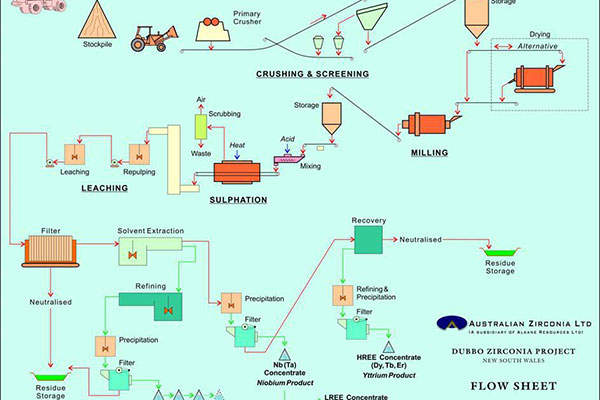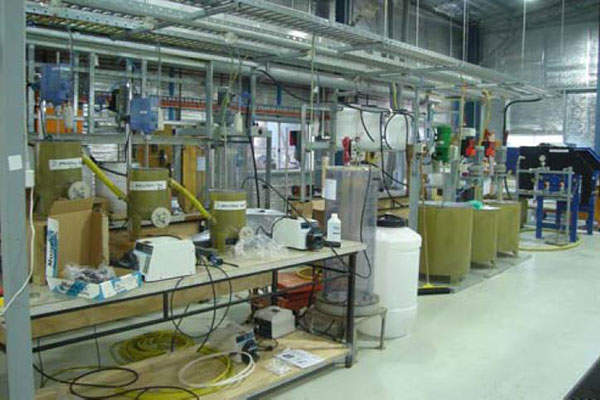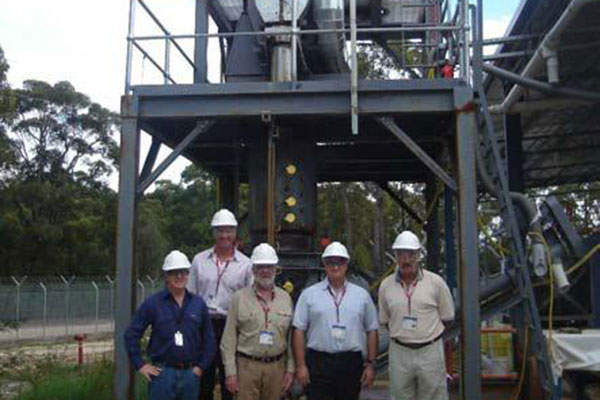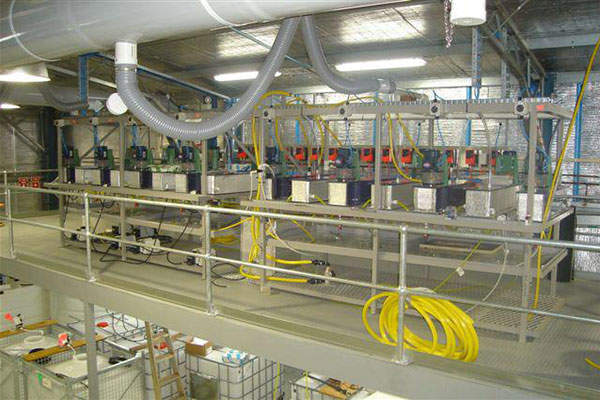
The Dubbo Zirconia mine is a proposed open-cut mine located near Toongi village, approximately 25km south of Dubbo city, New South Wales (NSW), Australia. Aprroximately one million tonne of ore a year is estimated to be recovered from the mine.
The Dubbo Zirconia Project (DZP) will recover zirconium, hafnium, niobium, tantalum, yttrium and rare earth elements from the mine, which covers an area of approximately 45ha. The mine is operated by Australian Zirconia, a wholly owned subsidiary of Alkane Resources.
The technical and financial feasibility study for the project was conducted based on the results of the demonstration pilot plant located at Australian Nuclear Science and Technology Organisation’s (ANSTO) Lucas Heights campus. The front end engineering and design (FEED) was completed in early 2015.
Construction at the site is expected to begin in late 2015, while commercial operations are anticipated to begin by 2016.
The DZP project is anticipated to produce 16,000t of zirconium dioxide (ZrO2), 4,900t of rare earth oxides, and 3,000t of Ferroniobium (FeNb) in 2017.
Project benefits of Dubbo zirconium mine
The project is expected to account for up to 5% of annual global heavy rare earth supplies. It will employ between 300 and 400 people during the construction phase and approximately 250 people during the operational phase.
Dubbo Zirconia mine geology and mineralisation
The Toongi deposit, which hosts the mineralisation, is a sub-volcanic Jurassic-aged trachyte (weakly radioactive alkaline volcanic rock) horizontal intrusive body or lava flow spread across 900m x 600m area that was drilled more than a decade ago.
The site also consists of naturally occurring radioactive materials (NORM) of thorium and uranium in a small quantity.
Dubbo zirconia mine reserves
The Dubbo zirconia mine contains estimated proven and probable ore reserves of 8.07 million tonnes (Mt) and 27.86Mt respectively, according to 2012 estimates.
Mining and processing of ore
The Dubbo zirconia project will be an open cut operation that will extract 19.5Mt of ore a year from a 32m-deep open cut.
The extracted ore will be loaded from the run-of-mine (ROM) pad into a primary crusher and further reduced in size using a dry grinding circuit. Sulphuric acid will be injected to the ground ore feed and heated to convert the material into sulphated ore.
The sulphated ore will be leached in water and sent for solvent extraction and precipitation, followed by thickening, washing, drying and smelting to obtain the final product.
Residues from the process, both solid and liquid, will be neutralised by adding crushed and slurried limestone before dumping them into solid or liquid residue storage facilities.
Financing for the Dubbo zirconia project
The estimated investment for the mine development is $1bn, which is being funded with the help of Credit Suisse (Australia), Sumitomo Mitsui Banking Corporation and Petra Capital, while Export Credit Agency (ECA) is expected to provide further financial support.
Off-take agreements
Alkane Resources entered a joint venture framework agreement with Treibacher Industrie (TIAG) in 2013 to buy the niobium concentrate produced at the mine, while Australian Zirconia will produce more than 3,000t of ferro-niobium (FeNb) using a proprietary technology licensed by TIAG.
Negotiations for a marketing agreement are underway with the European manufacturing and trading company (EMTC) for the marketing of DZP products in Europe, North America and other locations.
Alkane Resources signed a memorandum of understanding (MoU) with Japan’s Shin-Etsu Chemical in July 2012, for the shipping of 100% of the DZP’s rare earth outputs to Japan for processing them into high-purity individual rare earth oxides to be supplied to the global market.
Infrastructure facilities
Power for the mine will be supplied from the 132kV Geurie to Toongi power line, while water will be sourced from the Macquarie River by means of a new pipeline.
A natural gas supply pipeline is also proposed to be constructed along the Toongi-Dubbo rail and gas pipeline corridor.
Public roads will be improved and an access route is proposed for the DZP site, connecting it with the public network. Water management and retention structures will also be built within the site.
Contractors involved with the Dubbo project
Hatch was engaged to perform the FEED, while R W Corkery & Co prepared the environmental assessment report and the NSW Department of Planning & Environment (DP&E) approved it in September 2014.
TIAG is providing detailed engineering and costing services for a ferro-niobium plant that is proposed to be integrated with the DZP processing facility.








